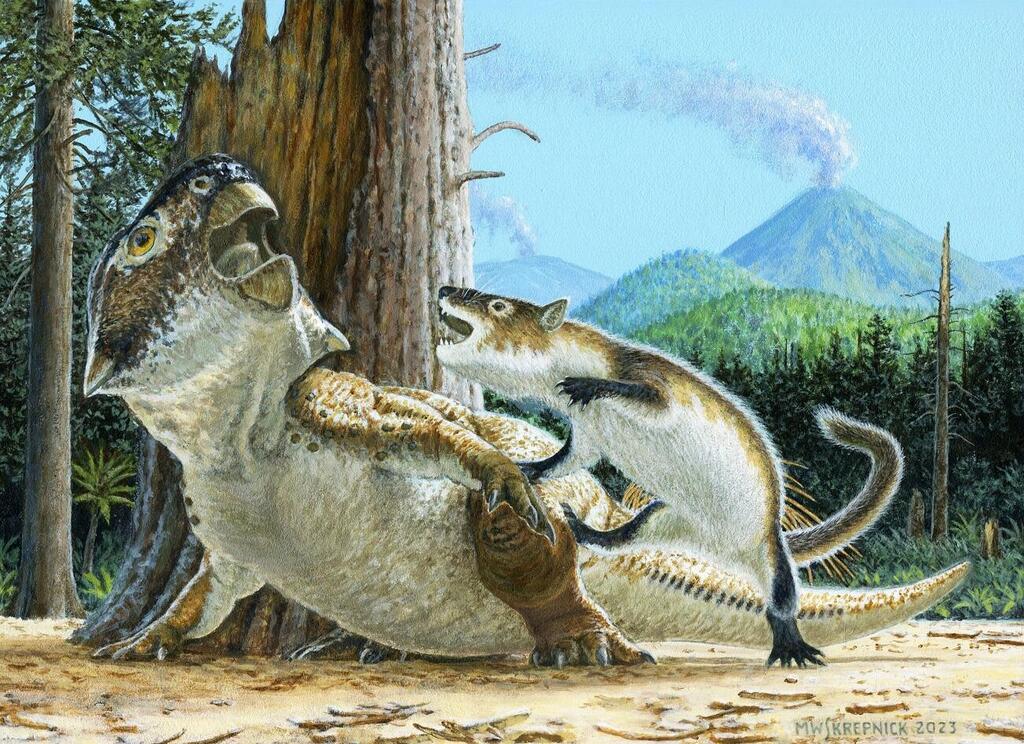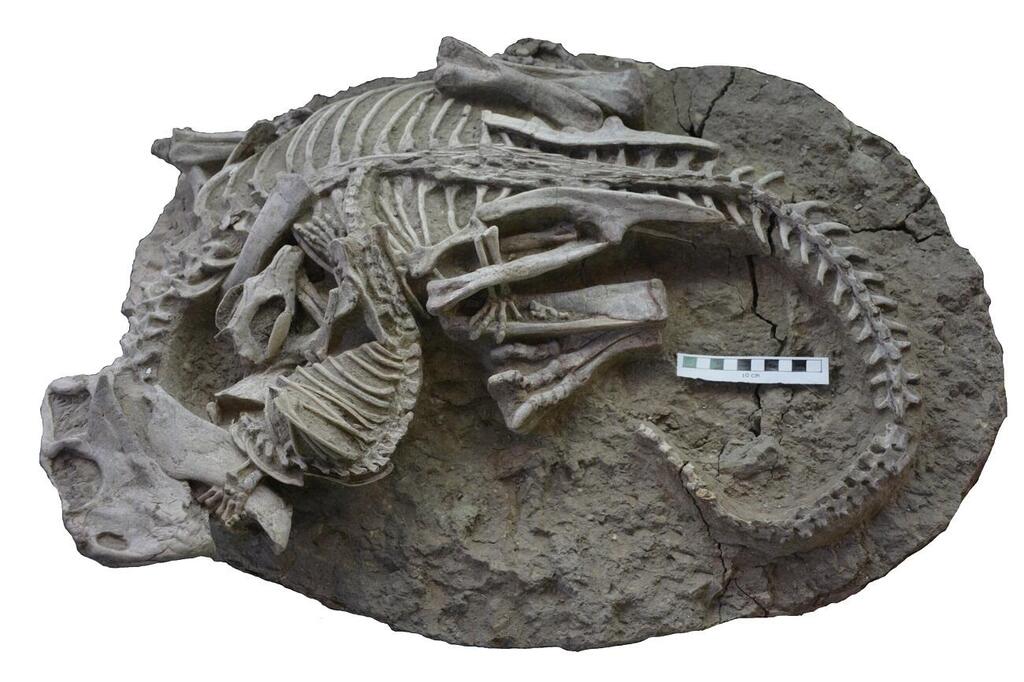Getting your Trinity Audio player ready...
It was 150 million years ago that a small mammal attempted to devour a larger herbivorous dinosaur. How do we know this? Because a Chinese archeological expedition was able to uncover the volcanic remains of that moment. The location where this was unearthed is widely expected to birth subsequent exciting moments for inter-species encounters from the Cretaceous period, a geological period that lasted from about 145 to 66 million years ago.
"The two animals are locked in mortal combat, intimately intertwined, and it's among the first evidence to show actual predatory behavior by a mammal on a dinosaur," explains Dr. Jordan Mallon, Paleobiologist with the Canadian Museum of Nature and co-author on the study published in the peer-reviewed journal Scientific Reports.
While it was widely believed dinosaurs faced little-to-no threats at the top of the food chain at the time, the latest findings challenge that assumption. The fossil discovered is now stored at the Weihai Ziguang Shi Yan School Museum in China's Shandong Province.
Within that well-preserved fossil lies a dinosaur known as a Psittacosaurus. While the name might invoke gargantuan creatures, towering over all those around them, this one was the size of a Dalmatian dog. This horned dinosaur was herbivorous and lived in Asia during the Cretaceous period.
The smaller mammal, which apparently cared not for the size of its intended prey, was called Repenomamus robustus and resembled a modern-day badger. Taking on larger prey is normal for badgers even today, but back then mammals weren't nearly as dominant as they are now. "The co-existence of these two animals is not new, but what's new to science through this amazing fossil is the predatory behavior it shows," says Mallon.
Known as "China's Dinosaur Pompeii", the Liaoning Province is where the nearly-complete fossil findings were discovered back in 2012. The reason behind the nickname for this area is rooted in the fact that dinosaurs, small mammals, lizards and amphibians were buried by mudslides and debris following multiple volcanic eruptions. The existence of the rock matrix inside the volcanic material was authenticated by Canadian Museum of Nature mineralogist Dr. Aaron Lussier.
The Repenomamus' body is contorted to the right, perched on its prey, while its predatory beak firmly grips the large dinosaur's neck and bites into the pterosaur's organs, suggesting an attack in motion.
2 View gallery


An illustration showing the encounter likely transpired
(Illustration: Michael Skrepnick)
Dr. Mallon and his research team investigated the possibility that the pterosaur did not feed on the deceased dinosaur but rather attacked it with bites before preying on it. The researchers find it implausible for the two animals to intertwine to such a degree if the dinosaur was already dead before the pterosaur landed on it. The Repenomamus' positioning above the pterosaur strongly indicates it was the aggressor in this fatal encounter.
In the modern world, it is widely recognized that small animals often attack larger prey. Dr. Mallon and his research team highlighted cheetahs as an example, which despite their intricate structure, were capable of running up to 38 MPH for significant distances and hunting larger animals like North African gazelles and domestic sheep. Similarly, in the African savannah, packs of wild dogs, hyenas, and painted wolves fearlessly attack prey larger than themselves.
"This might be the case of what's depicted in the fossil," says Mallon. "With the Repenomamus actually eating the Psittacosaurus while it was still alive—before both were killed in the roily aftermath."


